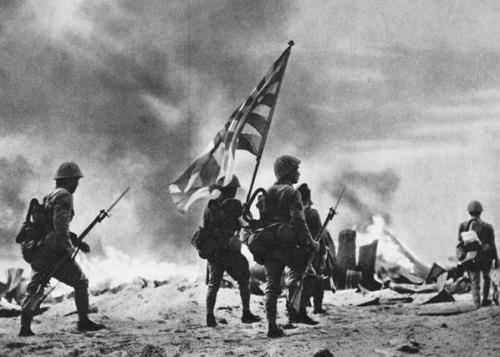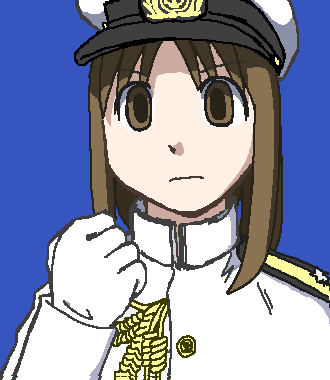#imperial japanese navy
Japanese Patrol Boat 39 sinking after being torpedoed by American submarine Seawolf, 23 Apr 1943; seen from Seawolf’s periscope.
Post link
On April 7, 1945, American aircraft destroyed the battleship Yamato off the coast of Okinawa during the Battle of the East China Sea. The Yamato was the largest battleship in the world at the time. (US Navy)
Post link
Imperial Japanese Navy Special naval landing forces during the invasion of Rabaul island, New Britain, New Guinea, January 23rd - February 1942.
Post link
IJN Mikasa
Launched in 1902 and photographed in the top image in 1905, the Mikasa is the only surviving pre-dreadnought battleship in the world. The Mikasa is now a museum ship, is actually embedded in concrete and is to be found in the town of Yokosuka on the Yokohama Bay.
The following article wriiten by Geoffrey Morrison and on CNET gives a great breakdown of the story of IJN Mikasa, the current museum and includes some fantastic images of the ship.
http://www.cnet.com/news/japans-114-year-old-battleship-mikasa-a-relic-of-another-time/
Post link

IJN SNLF stationed in Maizuru Naval Base, 1943 (colorized) personal collection
Special Navy post from my Japanese unit.
Now for something completely different!
We have noticed there appears to be many misleading and wrong information regarding the Japanese Naval Land Combat Units and we hope this academic blurb we wrote awhile ago would dispel any myths perpetuated by the lack of research and/or assumptions.
①. Naval Landing Force: NLF, are an incredibly misleading way of calling the Navy land combat units, because per navy regulation they can be organized under literally any circumstances, they are just a way of calling navy sailors that happen to fight on land, you would never have units with the prefix NLF in it, sans a couple of special cases. Examples of units special cases are the Naval Land Artillery Force during the russo-japanese war and ww1, the shanghai NLF prior to 1932, and the Nikolayevsk NLF.
②. Special Naval Landing Force: SNLF are specially organized units based on navy port bases. Their full name are Special Navy Base Special Naval Landing Force, or Tokusetsu Chinjyufu Tokubetsu Rikusen Tai. Example: 3rd Yokosuka SNLF. Some bases instead of having an independent SNLF unit have combined SNLF unit with other bases. When following the 1936 SNLF TOE they are supposed to have 3 companies and equivalent to an IJA battalion sized unit. During the war however they sometimes have a bit more and consists of roughly 1200 personnel. They are underfunded(does not even exceed 5% of the navy budget), undermanned (Flight, ship crew has higher priority), under equipped (Most equipment are Army left overs), and under trained (They never trained with more than battalion sized movement, meaning most SNLF units are clueless about combined arms and muti-unit tactical movements). They are a type of NLF, but are not all of the IJN’s land combat units. Their only notable success is in Shanghai, but that’s with Army support. One SNLF unit before the 1936 Order was the Shanghai SNLF, Prior to 1936 SNLF were organized based on the immediate needs of the navy and did not have set organization. They were “special” not because they were trained to be land combat units, but rather that they were special because they are specifically organized for certain situations. They were organized from sailors still in basic training but not assigned to fleets, specifically all port base Kaiheidan.
There are only 3 examples of SNLF prior to 1936. The afformentioned Shanghai SNLF with it’s own unique structure, the SNLF sent to China in 1900 as part of the Peking relief force. The final one would be the 1st - 6th SNLF that were sent to take the german pacific holdings during WW1, after the islands were captured they immediately were reorganized into specific island garrisons.
The Shanghai SNLF were a special case, as prior to the 1932 Shanghai SNLF organization order, there were no official Shanghai SNLF. Just a really organized shanghai NLF unit that had no other equivalent in the navy. While referred to as the Shanghai SNLF in certain documents (they are special after all, but not all documents referred to them that way. Only a select few.), they still wear their origin port base training brigade head tassels, example Yokosuka Kaiheidan, and didn’t get their unique “SNLF” head tassel until the official creation of the the SNLF organization in February 1932. (That’s why photos prior to 1932 didn’t even have a mention of SNLF as a unit)
③. Naval Landing Force uniform items are issued to all navy personnel that are deemed necessary to have them. Which is to say all personnel that are on land at some point got issued with them. Pilots, maintenance, accountants, etc. Technically, since NLF is not a real unit designation but rather a type of occupation those personnel could be argued to be NLF. Incidentally, SNLF also gets the same equipment. So that means there are no “SNLF caps”. Only NLF cap, and NLF cap may be issued to anyone that the navy thinks will be on land bases/stations that require them. That’s why you will find photos of pilots wearing NLF jacket with pilot trousers.Their history did not start in the 20s, rather it is from 1886 following the 1886 “Navy Landing Force Rules and Regulations”.
For the above information, please reference the 1936 “special fleet unit order”. :)
And more, people need to understand how the IJN organizes land based units:
a. Navy Special Designated Base Force (aBg in documentation)- Created following the 1920 “Special Designated Base Unit Order” Is one of the two highest land based unit the IJN has. Rather than like the army, they have no set organization and are instead based on the locations needs. As such they may be consisted of a land based flight unit, base security, communication, and SNLF etc etc. They are named after the base location. For example, during the battle of Okinawa, the Okinawa Naval Special Designated Unit was involved in the defense of the Navy Artillery Base. They are usually tasked with defending a certain base and surrounding areas.
b. Navy Special Base Force (Bg in documentation) - Created following the 1939 “Special Base Unit Order: They are created due to the need of a more flexible land based combat unit. Their organization is ore akin to a ship with the commander and following squads. Like the designated base units, they may include base security, SNLF, etc. They are usually named with numbers. One famous example is the 3rd Naval Special Base Unit on the island of Tarawa
c. Naval Guard Units, they are usually organized under the Navy Guard Command (Makou, Oyodo, Port Arthur, Jinhae) or either of the aforementioned units.While they are an NLF unit. They should not be confused with the SNLF units. (In some cases however, they are organized from disbanded SNLF units). They are equally under trained as the SNLF however, so I guess there’s really no point in distinguishing them smiley . One big example is the 84th Naval Guard Unit detachment that was sent to Guadalcanal. They are the "SNLF” guarding the construction unit. There were 250 of them according to “Guadalcanal Battle History” by Hiroshi Kamei. Now, the 3rd Kure SNLF that was tasked with Tulagi landing was organized into the 84th Naval Guard, along with the 81st Naval Guard. So you might be able to say some of them were SNLF, but since the navy say they aren’t, they aren’t. Sometimes, like the base construction units, they will be attached directly to fleet commands instead.
Here a some examples of how the Navy organized their land units:
ex①.
XX Naval Special Base Force
- XX Naval Guard Unit
- XX Naval Construction Unit
- XX Naval Communications Unit
ex②.
Kure Navy Port Command
- 6th Kure Special Naval Landing Force
- XXX Naval Construction Unit
- Kure Port Guard Unit
- Kure Kaiheidan
- Kure Port Administration
- etc etc
ex③.
Okinawa Naval Special Designated Base Force
- Okine Combined Special Naval Landing Force
- Maruyama Battalion
- Yamaguchi Battalion
- Katsuda Battalion
- Naval Mortar Company
-Iwao Naval Aviation Unit
-etc etc
ex④.
Combined Fleet Command
- 84th Naval Guard
- 13th Naval Construction
8th Fleet Command
- 11th Naval Construction
Naval land units - the SNLF in particular - as a ground fighting force is lower standard, lower quality of recruits. They go through the training brigade with the hand book on ground combat and that was it. No additional training, just assigning troops that can’t make it to the air wing or the fleet.
The IJN never trained with regiment level combat nor tactics. NLF officers are also generally officers that couldn’t make it to fleet command with very little experience, with few exceptions. Specifically some SNLF units had officers who actually was knowledgeable on infantry combat, but these are isolated cases and does not reflect the SNLF as a whole.
Their equipment was of short supply at times as well: in land warfare, the NLF sometimes took on army surplus gear. (Example, Kiska island navy used army uniforms, Shanghai you can see army equipment being used)
However, throw anyone through combat and survivors will be better troops anyways despite the standard they start out as fresh troops. unlike the IJA most of the naval troops stationed in the Pacific have combat deployments on their belt, at least at the company level.
Allied service member’s experience with the NLF are biased towards the prior SNLF combat veterans that had experience in China and early island capture campaign, ignoring the naval guards which consists of the majority of the navy’s land fighting forces. A navy troop on land with a gun is not the SNLF, despite what collectors and reenactors may want to believe.
Pop history books/websites, Nakata books, tertiary sources, Wikipedia, and online articles are dubious academic references appear to perpetuate to the mystery and confusion of the Japanese Naval land units. We hope this article dispels any confusion!
A novel, of memorable liquor store and logging railroad 09
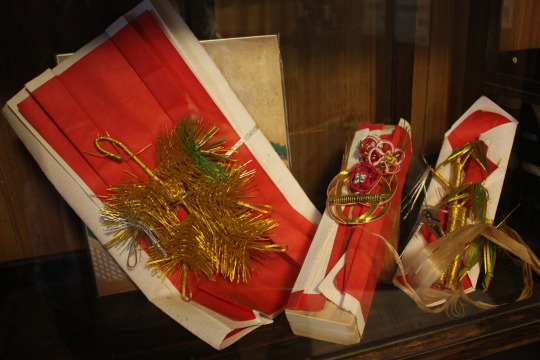
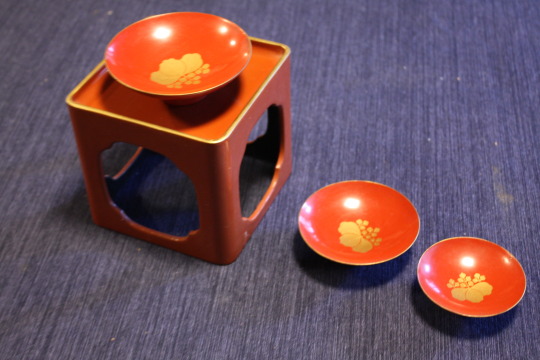
↑ Japanese wedding items
ちか子さんは、同じ設楽町内の清崎から、ここ三都橋の伊藤家にお嫁に来た。太平洋戦争も後半に差し掛かり、戦局が危うさを増してきたころのことであった。結婚の相手は伊藤忠利さん。ちか子さんの一人目の夫である。
忠利さんは伊藤家の長男で、地元の農蚕学校を卒業後、当時世界屈指の士官学校といわれた江田島兵学校に進んでいた。そして、昭和11年には呉海兵団へ入団、ウースン敵前上陸作戦などの危険な任務にも従事した、いわば、海軍のエリート候補生なのだった。
Ms. Chikako was from Kiyosaki in Shitara town and got married with one of member of Ito family living in Mitsuhashi. It was the latter half term of the world war 2. At that time the war situation gradually had got worse and worse for Japan. Chikako-san’s marriage partner was Mr.Tadatoshi Ito, he was her first husband and the only child of Ito family. He graduated local agricultural school and entered Etajima naval academy that was one of the most excellent naval academy in the world then. The 11th year of Showa era (1936), he was attached to Kure marine corps and engaged in some dangerous missions such as landing in the face of the enemy. He was a cadet of Japan Navy.
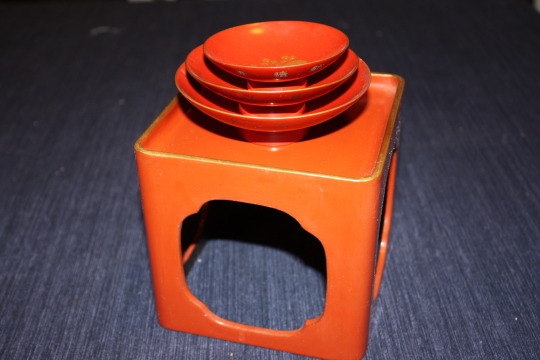
設楽町の女学生の間では、「三都橋にかっこいい軍人さんがいる」という噂で、早くからもちきりであった。海軍士官の白い制服は、どこにいても嫌でも目に付く。まして、山間部に向かう田口線の中では、いやでも注目の的になる。忠利さんが軍務の合間に帰省すれば、その噂はあっという間に設楽町内に広まった。
He was a famous and fabulous man among the school girls in Shitara town. ‘In Mitsuhashi there is a cool soldier’. They used to say. Actually, an white uniform of Japan Navy was very showy. People who happened to see Tadatoshi-san in Taguchi local line talked of his returning. 'He came back to Mitsuhashi on furlough’ . And the information was spreaded throughout Shitara town immediately.
その忠利さんと伊藤家が、家の嫁に、我が妻にと、白羽の矢を立てたのが、ちか子さんだった。ちか子さん、二十歳前の白無垢姿であった。
It was Chikako-san whom Tadatoshi-san and Ito family focused on as a bride. Chikako-san accepted their offer and worn Shiromuku , that is a Japanese traditional bride outfit. At that time she was 20 years old or younger.
つづく to be continued
jump to the table of contents 目次のページへ



